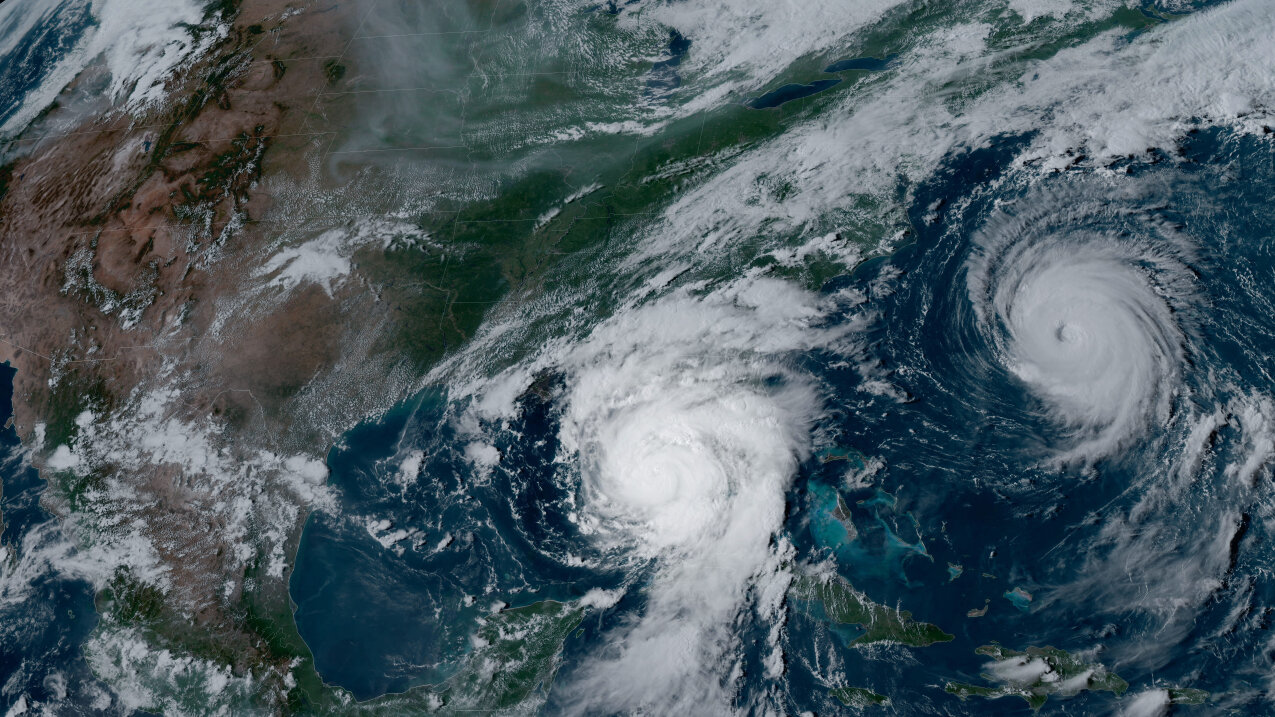Wednesday, June 26, 2024
Forecasters predict ‘extraordinary’ storm season
■ Know if you’re in an evacuation or
flood zone, or flood-prone area
■ Prepare a ‘go’ bag
■ Have supplies ready like flashlights,
batteries, bottled water, nonperishable
food, extra medication for
you and your pets, tarp, duct tape
■ Take note of where your electrical
equipment is located
Learn more at NOAA.gov.
–Ben Fiebert
With at least 17 forecasted named storms, the National Oceanic and Atmospheric Administration anticipates the most active hurricane season outlook ever.
The Atlantic hurricane season officially started June 1 when ocean temperatures are typically primed for storm development. Predicting that 17 storms will reach at least tropical storm status — with sustained winds of between 39 and 73 mph — is unusually high considering an average Atlantic hurricane season between 1991 and 2020 included 14 named storms — half of them hurricanes, and three of those major hurricanes.
“This season is looking to be an extraordinary one,” NOAA administrator Rick Spinrad told reporters during a news conference.
Nelson Vaz, a New York-based warning coordination meteorologist for the National Weather Service, noted the forecast calls for high activity in the Atlantic Ocean due to abnormally warm water temperatures and favorable wind conditions.
El Niño — a vast area of above-normal water temperatures in the east Pacific Ocean — is cooling down and forecasted to transition to La Niña by late summer. That means below-normal water temperatures creating what Vaz says is a recipe for more tropical development.
But while meteorologists can focus on how the storms will form, it’s tough to predict on where they will end up.
“The one thing that is not in the forecast is landfall,” Vaz said. “You can’t forecast where the storms are going to go, when they are going to occur. So, those are going to be shorter term forecasts based on shorter term weather patterns.”
The threat for a landfalling hurricane is higher than it would be in a typical season, Vaz emphasized. Even in a low-activity season, it’s important for people on Long Island to prepare, even though only a handful of storms ever make it this far north.
The best time to prepare, Vaz said, is now before the hurricane season starts to pick up in late July.
Jackie Bray, the commissioner of the state’s homeland security and emergency services division, says that anyone living on the coast needs to know if they’re in an evacuation or flood zone. And that even includes people who live inland, as flooding could very much be an issue.
Residents should to prepare for potentially being trapped for a few days if local authorities can’t get to them.
“Prepare a ‘go’ bag,” Bray said. “Flashlights, batteries, bottled water, non-perishable food, extra medication for you and your pets, tarp, duct tape, and stuff that you just might need.”
Homeowners should make sure they know where electrical equipment is located at their residence, and find out what their drainage situation is like.
If a tropical system were to impact the area, Bray explained her department would set up an emergency operations center. From there, they would start tracking local needs, such as generators, light and crews to remove downed trees.
“And because all signs point to an incredibly active season, we’re really focused now on the tabletop exercises, training exercises, and making sure our stockpiles are full,” Bray said.
To stay up to date on the hurricane season, visit NOAA.gov. For information on how to get notified during weather emergencies, visit Alert.NY.gov.
HELP SUPPORT LOCAL JOURNALISM
The worldwide pandemic has threatened many of the businesses you rely on every day, but don’t let it take away your source for local news. Now more than ever, we need your help to ensure nothing but the best in hyperlocal community journalism comes straight to you. Consider supporting the Herald with a small donation. It can be a one-time, or a monthly contribution, to help ensure we’re here through this crisis. To donate or for more information, click here.
Sponsored content
Other items that may interest you






